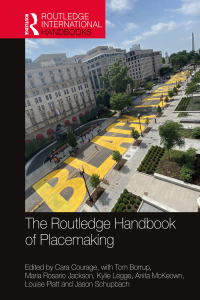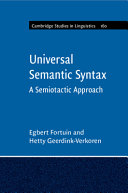Buy The Routledge Handbook of Placemaking 1st Edition PDF ebook by author Cara Courage; Tom Borrup; Maria Rosario Jackson – published by Routledge in 2021 and save up to 80% compared to the print version of this textbook. With PDF version of this textbook, not only save you money, you can also highlight, add text, underline add post-it notes, bookmarks to pages, instantly search for the major terms or chapter titles, etc.
You can search our site for other versions of the The Routledge Handbook of Placemaking 1st Edition PDF ebook. You can also search for others PDF ebooks from publisher Routledge, as well as from your favorite authors. We have thousands of online textbooks and course materials (mostly in PDF) that you can download immediately after purchase.
Note: e-textBooks do not come with access codes, CDs/DVDs, workbooks, and other supplemental items.
eBook Details:
Full title: The Routledge Handbook of Placemaking 1st Edition
Edition: 1st
Copyright year: 2021
Publisher: Routledge
Author: Cara Courage; Tom Borrup; Maria Rosario Jackson
ISBN: 9780367220518
Format: PDF
Description of The Routledge Handbook of Placemaking 1st Edition:
This Handbook is the first to explore the emergent field of ‘placemaking’ in terms of the recent research, teaching and learning, and practice agenda for the next few years. Offering valuable theoretical and practical insights from the leading scholars and practitioners in the field, it provides cutting-edge interdisciplinary research on the placemaking sector. Placemaking has seen a paradigmatic shift in urban design, planning and policy to engage the community voice, and in the arts, an increasing concern for place-based community development and culturally led urban regeneration. This Handbook examines the development of placemaking, its emerging theories, and its future directions. The book is structured in seven distinct sections curated by experts in the areas concerned. Section one provides a glimpse at the history and key theories of placemaking and its interpretations by different community sectors. Section two studies the transformative potential of placemaking practice through case studies on different places, methodologies, and theoretical frameworks. It also reveals placemaking’s potential to nurture a holistic community engagement, social justice, and human-centric urban environments. Section three looks at the politics of placemaking to consider who is included and who is excluded from its practice and if the concept of placemaking needs to be reconstructed. Section four deals with the scales and scopes of art-based placemaking, moving from the city to the neighborhood and further to the individual practice. It juxtaposes the voice of the practitioner and professional alongside that of the researcher and academic. Section five tackles the socio-economic and environmental placemaking issues deemed pertinent to emerge more sustainable placemaking practices. Section six emphasizes placemaking’s intersection with urban design and planning sectors and incudes case studies of generative planning practice. The final seventh section draws on the expertise of placemakers, researchers and evaluators to present the key questions today, new methods and approaches to evaluation of placemaking in related fields, and notions for the future of evaluation practices. Each section opens with an introduction to help the reader navigate the text. This organisation of the book considers the sectors that operate alongside the core placemaking practice. This seminal Handbook offers a timely contribution and international perspectives for the growing field of placemaking. It will be of interest to academics and students of placemaking, urban design, urban planning and policy, architecture, geography, cultural studies, and the arts.





